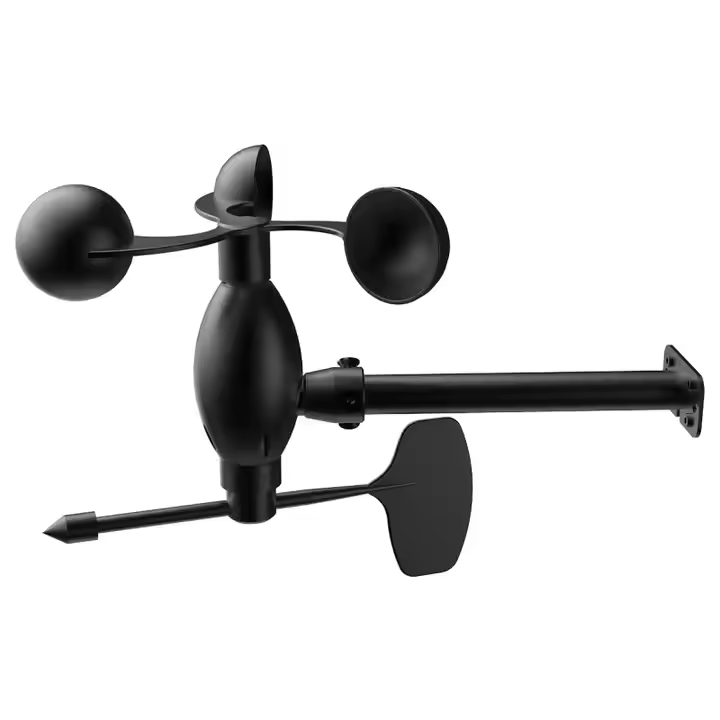Salaku paménta global pikeun énergi renewable terus tumuwuh, Peru aktip ngajajah tur ngembangkeun sumberdaya énergi angin na loba pisan. Anyar-anyar ieu, sajumlah proyék énergi angin di Peru mimiti ngagunakeun anemometers precision tinggi, nyirian pangwangunan énergi angin nagara parantos lebet kana tahap énggal.
Pentingna assessment sumberdaya énergi angin
Peru ngabogaan basisir panjang jeung pagunungan Andes, fitur geografis nu ngajadikeun eta idéal pikeun ngembangkeun énergi angin. Tapi, kasuksésan proyék énergi angin gumantung ka extent badag dina assessment akurat sumberdaya énergi angin. Pangukuran akurat data konci sapertos laju angin, arah sareng kapadetan énergi angin penting pisan pikeun perencanaan sareng palaksanaan proyék énergi angin.
Aplikasi anemometer
Dina raraga ngaronjatkeun akurasi assessment sumberdaya énergi angin, sababaraha pausahaan énergi jeung lembaga ilmiah di Peru geus dimimitian ngagunakeun anemometers canggih. Anemometers ieu ngawas indikator konci sapertos laju angin, arah sareng kapadetan énergi angin sacara real waktos sareng ngirimkeun data sacara nirkabel ka pangkalan data pusat.
Kaunggulan tina anemometers precision tinggi
1. Pangukuran precision tinggi:
Nganggo téknologi sénsor pang anyarna, anemometer ieu nyayogikeun data kecepatan angin sareng arah anu akurat kalayan tingkat kasalahan kirang ti 1%. Ieu ngajantenkeun perencanaan sareng desain proyék énergi angin langkung ilmiah sareng dipercaya.
2. Pangimeutan data sacara real-time:
Anemometer ngumpulkeun data unggal menit sareng ngirimkeunana ka pangkalan data pusat sacara real waktos ngalangkungan jaringan nirkabel. Perusahaan énérgi sareng lembaga ilmiah tiasa ngaksés data ieu iraha waé pikeun analisa sareng pengambilan kaputusan sacara real-time.
3. ngawaskeun multi-parameter:
Salian laju sareng arah angin, anemometer ieu ogé tiasa ngawas parameter lingkungan sapertos suhu hawa, kalembaban, sareng tekanan barometrik. Data ieu penting pikeun penilaian komprehensif ngeunaan poténsi sareng dampak lingkungan sumber énergi angin.
Kasus: proyék énergi angin di Peru kidul
Latar proyék
Wewengkon kidul Peru beunghar ku sumber tanaga angin, utamana di wewengkon Ica jeung Nazca. Pikeun ngembangkeun sumber daya ieu, hiji parusahaan énergi internasional, dina partnership kalawan pamaréntah Peruvian, geus dibuka proyék énergi angin badag di wewengkon.
Aplikasi anemometer
Salila proyek, insinyur dipasang 50 anemometers-precision tinggi di sagala rupa lokasi. Anemometer ieu ayana di sapanjang basisir sareng di daérah pagunungan, ngawaskeun data sapertos laju angin sareng arah sacara real waktos. Kalayan data ieu, insinyur tiasa nampi gambaran anu komprehensif ngeunaan distribusi sumber energi angin di daérah éta.
Hasil beton
1. Optimalkeun perenah tegalan angin: Ngagunakeun data anemometer, insinyur bisa nangtukeun lokasi pangalusna pikeun PLTMH angin. Dumasar data laju angin sareng arah, aranjeunna nyaluyukeun tata perenah kebon angin pikeun ningkatkeun efisiensi turbin angin sakitar 10 persen.
2. Ningkatkeun efisiensi generasi kakuatan: data Anemometer ogé mantuan insinyur ngaoptimalkeun parameter operasi turbin angin. Dumasar data laju angin sacara real-time, aranjeunna nyaluyukeun laju turbin sareng Sudut sabeulah pikeun ningkatkeun efisiensi pembangkitan listrik.
3. Penilaian Dampak Lingkungan: Data lingkungan anu diawaskeun ku anemometer ngabantosan insinyur ngira-ngira dampak proyék énergi angin dina lingkungan ékologis lokal. Dumasar data ieu, aranjeunna ngembangkeun ukuran panyalindungan lingkungan anu pas pikeun ngirangan dampak kana ékosistem lokal.
Eupan balik ti pamimpin proyék Carlos Rodriguez:
"Nganggo anemometers precision tinggi, urang tiasa langkung akurat meunteun sumber tanaga angin, ngaoptimalkeun perenah tegalan angin, sareng ningkatkeun efisiensi generasi listrik." Ieu henteu ngan ukur ngirangan résiko sareng biaya proyek, tapi ogé ngirangan dampak lingkungan. Kami ngarencanakeun pikeun terus ngagunakeun téknologi canggih ieu dina proyék-proyék anu bakal datang.
Gawé babarengan antara pamaréntah jeung lembaga panalungtikan
Pamaréntah Peruvian nempel pentingna hébat kana ngembangkeun sumberdaya énergi angin, sarta cooperates kalawan sababaraha lembaga panalungtikan ilmiah pikeun ngalaksanakeun assessment sumberdaya énergi angin jeung panalungtikan téhnologi anemometer. "Ku ngamajukeun téknologi anemometer, kami ngarep-arep ningkatkeun akurasi penilaian sumber énergi angin sareng ngamajukeun pangwangunan sustainable proyék énergi angin," saur Badan Énergi Nasional Peru (INEI).
outlook hareup
Kalayan kamajuan kontinyu sareng popularisasi téknologi anemometer, pamekaran énergi angin di Peru bakal ngiringan jaman anu langkung ilmiah sareng efisien. Ka hareupna, anemometer ieu tiasa digabungkeun sareng téknologi sapertos drone sareng sensing jauh satelit pikeun ngabentuk sistem ngawaskeun énergi angin anu lengkep.
Maria Lopez, Présidén Peruvian Angin Energy Association (APE), ngadawuh: "Anemometers mangrupakeun bagian penting tina ngembangkeun énérgi angin. Ngaliwatan alat-alat ieu, urang bisa hadé ngartos distribusi jeung parobahan sumberdaya énergi angin, ku kituna pikeun ngahontal pamakéan leuwih efisien énergi angin. Ieu teu ngan baris mantuan ngaronjatkeun proporsi énergi renewable, tapi ogé nyumbang kana ngembangkeun hiji ékonomi héjo di Peru ".
kacindekan
Pangembangan énergi angin di Peru nuju ngalaman transformasi anu didorong ku téknologi. Aplikasi lega anemometer precision tinggi teu ukur ngaronjatkeun akurasi assessment sumberdaya énergi angin, tapi ogé nyadiakeun dasar ilmiah pikeun perencanaan sarta palaksanaan proyék énergi angin. Kalayan kamajuan téknologi sareng dukungan kabijakan anu terus-terusan, pamekaran énergi angin di Peru bakal ngiringan masa depan anu langkung cerah sareng sacara positif nyumbang kana pencapaian Tujuan Pangwangunan Sustainable.
waktos pos: Jan-20-2025


